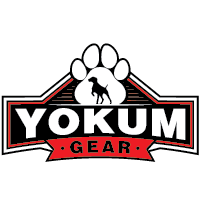Dog agility is an exhilarating sport that not only strengthens the bond between you and your canine companion but also provides a great physical and mental workout for both of you. Whether you're looking to compete in agility trials or simply want to enjoy a new hobby with your dog, mastering the basics of dog agility can be a rewarding experience. This guide will introduce you to the world of dog agility and offer tips on how to get started.
What is Dog Agility?
Dog agility is a competitive activity in which dogs navigate a timed obstacle course consisting of jumps, tunnels, weave poles, and other challenges. Handlers direct their dogs through the course using voice commands, gestures, and body language. The goal is to complete the course as quickly and accurately as possible.
Benefits of Dog Agility
Participating in dog agility offers numerous benefits for both dogs and their owners:
- Physical Exercise: Agility training improves a dog's strength, speed, and overall fitness.
- Mental Stimulation: Dogs must think quickly and follow commands, which enhances their cognitive abilities.
- Improved Bond: The teamwork required in agility strengthens the relationship between the dog and handler.
- Socialization: Agility classes and competitions provide opportunities to meet other dog enthusiasts.
Getting Started with Dog Agility
Before beginning agility training, make sure your dog is healthy and suited for high-impact activities. Consult your veterinarian for a check-up if necessary. Once you have the green light, follow these steps to start your agility journey:
Choose the Right Equipment
You'll need some basic agility equipment to begin training. Common obstacles include:
- Jumps: Various types of jumps such as single, double, and triple.
- Tunnels: Flexible tubes that dogs must run through.
- Weave Poles: Poles set in a line that dogs weave through.
- Contact Obstacles: A-frames, dog walks, and teeter-totters where dogs must touch specific zones.
Find a Training Class
Attending a structured training class is beneficial for beginners. Look for local dog training clubs or schools that offer agility courses. Professional trainers can teach you the correct techniques and provide feedback on your progress.
Start with Basic Commands
Agility requires a solid foundation of basic obedience commands such as sit, stay, and come. Ensure your dog is proficient in these commands before progressing to more complex agility training.
Introduce Obstacles Gradually
Begin with simple obstacles and gradually introduce more challenging ones. Start with jumps set at low heights and short tunnels. Use treats and positive reinforcement to encourage your dog and make the training fun.
Key Training Tips
To help you and your dog excel in agility, keep these training tips in mind:
- Keep Training Sessions Short: Dogs have short attention spans, so keep training sessions brief and engaging.
- Use Positive Reinforcement: Reward your dog with treats, praise, or toys for completing obstacles correctly.
- Stay Patient and Consistent: Progress may be slow at first, but consistency is key. Celebrate small victories and remain patient.
- Learn to Read Your Dog: Pay attention to your dog's body language and energy levels. Adjust the training pace accordingly.
Competing in Agility Trials
Once you and your dog have mastered the basics, you may wish to participate in agility competitions. Agility trials are organized by various organizations such as the American Kennel Club (AKC) and United States Dog Agility Association (USDAA). Competitions offer different levels of difficulty and courses are designed to test speed, accuracy, and teamwork. Make sure to familiarize yourself with the rules and regulations of the organization hosting the trial.
Conclusion
Dog agility is a rewarding and dynamic sport that offers numerous benefits for you and your dog. By following this guide and committing to regular practice, you can master the basics of agility and experience the joys of this exciting activity. Remember to have fun, stay patient, and cherish the moments spent with your furry friend as you navigate the challenges of agility together.

